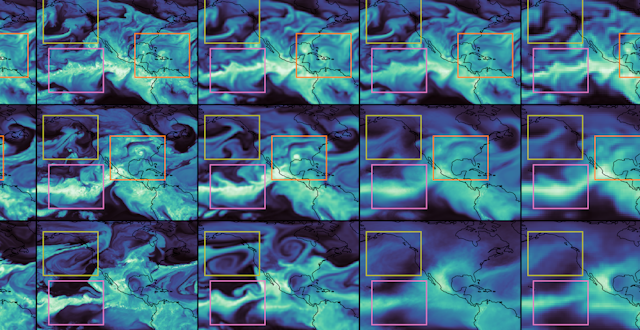

Sanaa Hobeichi ne travaille pas, ne conseille pas, ne possède pas de parts, ne reçoit pas de fonds d'une organisation qui pourrait tirer profit de cet article, et n'a déclaré aucune autre affiliation que son organisme de recherche.
UNSW Sydney apporte un financement en tant que membre adhérent de The Conversation AU.
Voir les partenaires de The Conversation France
A new system for forecasting weather and predicting future climate uses artificial intelligence (AI) to achieve results comparable with the best existing models while using much less computer power, according to its creators.
In a paper published in Nature today, a team of researchers from Google, MIT, Harvard and the European Centre for Medium-Range Weather Forecasts say their model offers enormous “computational savings” and can “enhance the large-scale physical simulations that are essential for understanding and predicting the Earth system”.
The NeuralGCM model is the latest in a steady stream of research models that use advances in machine learning to make weather and climate predictions faster and cheaper.
The NeuralGCM model aims to combine the best features of traditional models with a machine-learning approach.
At its core, NeuralGCM is what is called a “general circulation model”. It contains a mathematical description of the physical state of Earth’s atmosphere, and it solves complicated equations to predict what will happen in the future.
However, NeuralGCM also uses machine learning – a process of searching out patterns and regularities in vast troves of data – for some less well-understood physical processes, such as cloud formation. The hybrid approach makes sure that the output of the machine learning modules will be consistent with the laws of physics.

A weakness of machine learning models is that they often struggle in unfamiliar situations – or in this case, extreme or unprecedented weather conditions. To do this, a model needs to be able to generalise, or extrapolate beyond the data it was trained on.
NeuralGCM appears to be better at this than other machine learning models, because its physics-based core provides some grounding in reality. As Earth’s climate changes, unprecedented weather conditions will become more common, and we don’t know how well machine learning models will keep up.
Nobody is actually using machine learning-based weather models for day-to-day forecasting yet. However, it is a very active area of research – and one way or another, we can be confident that the forecasts of the future will involve machine learning.